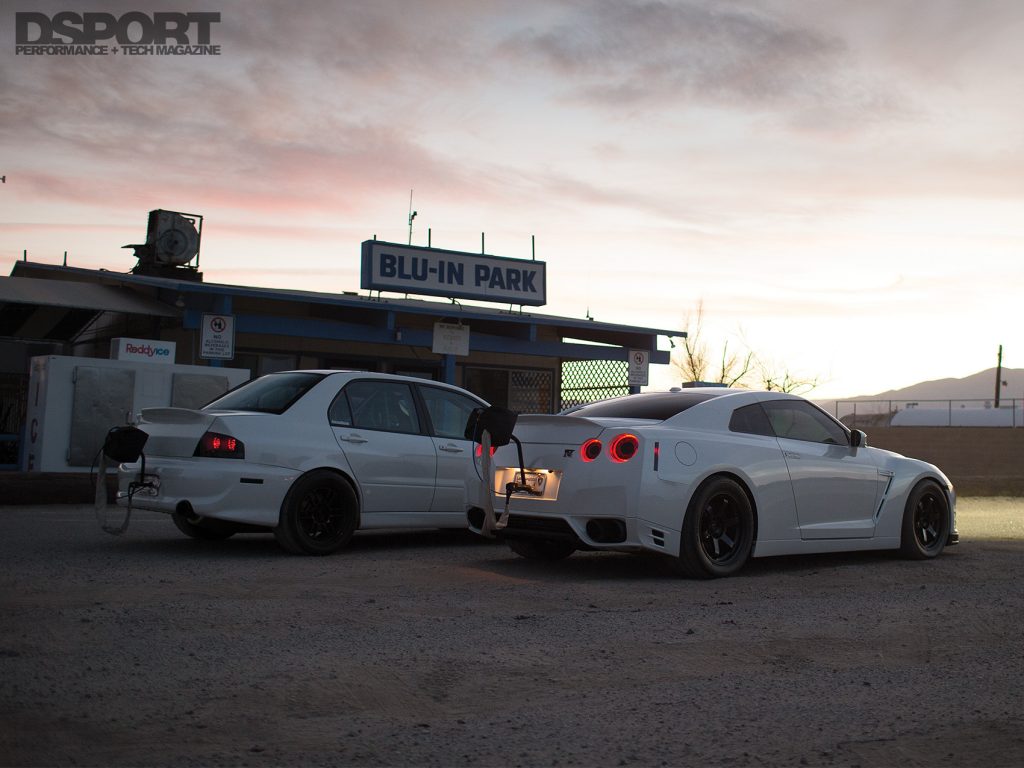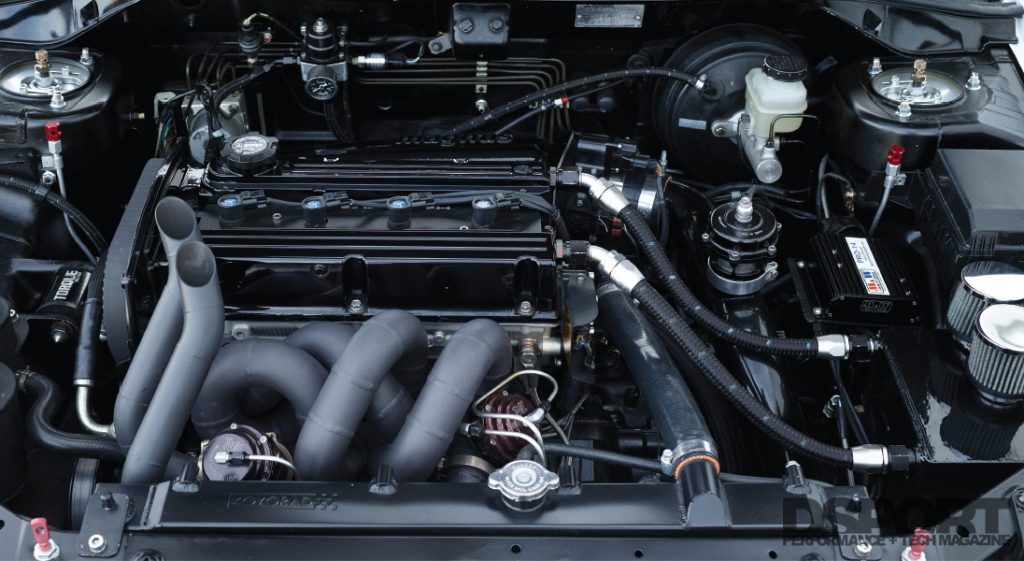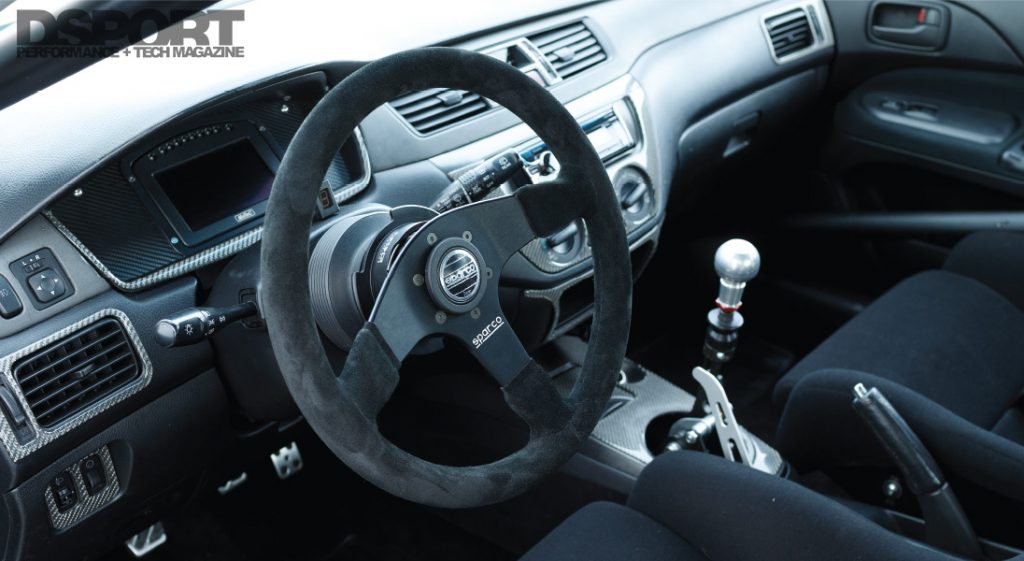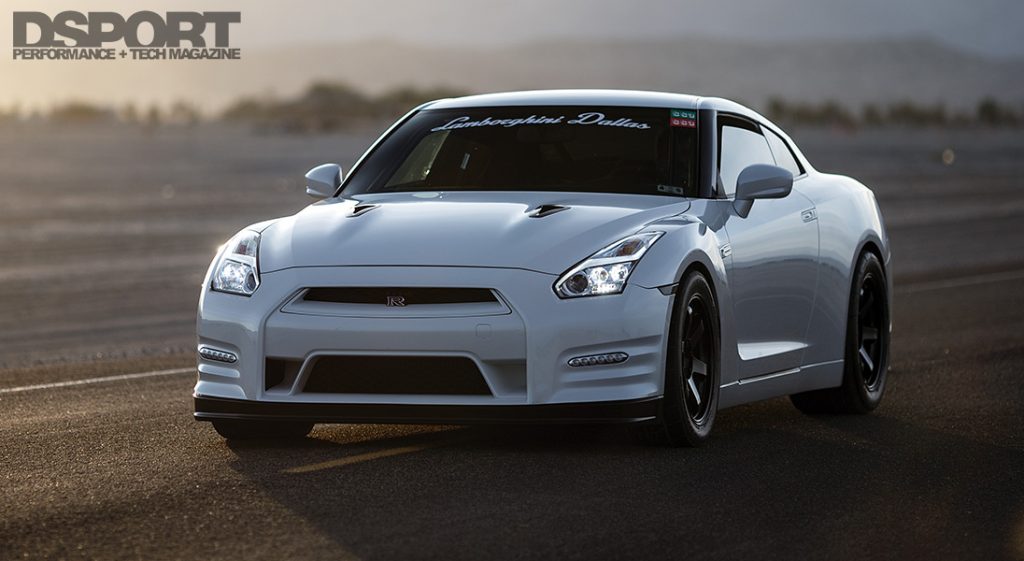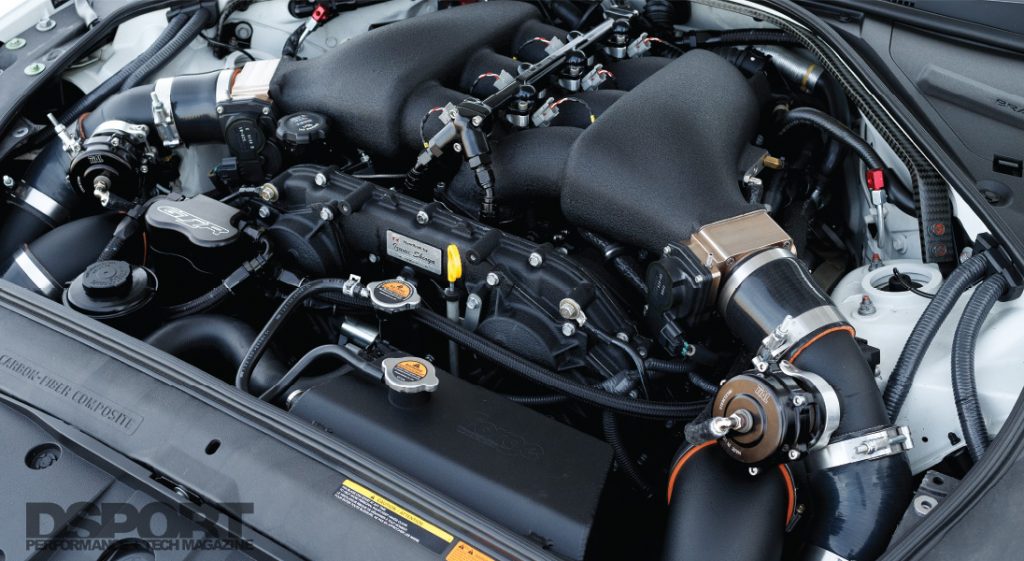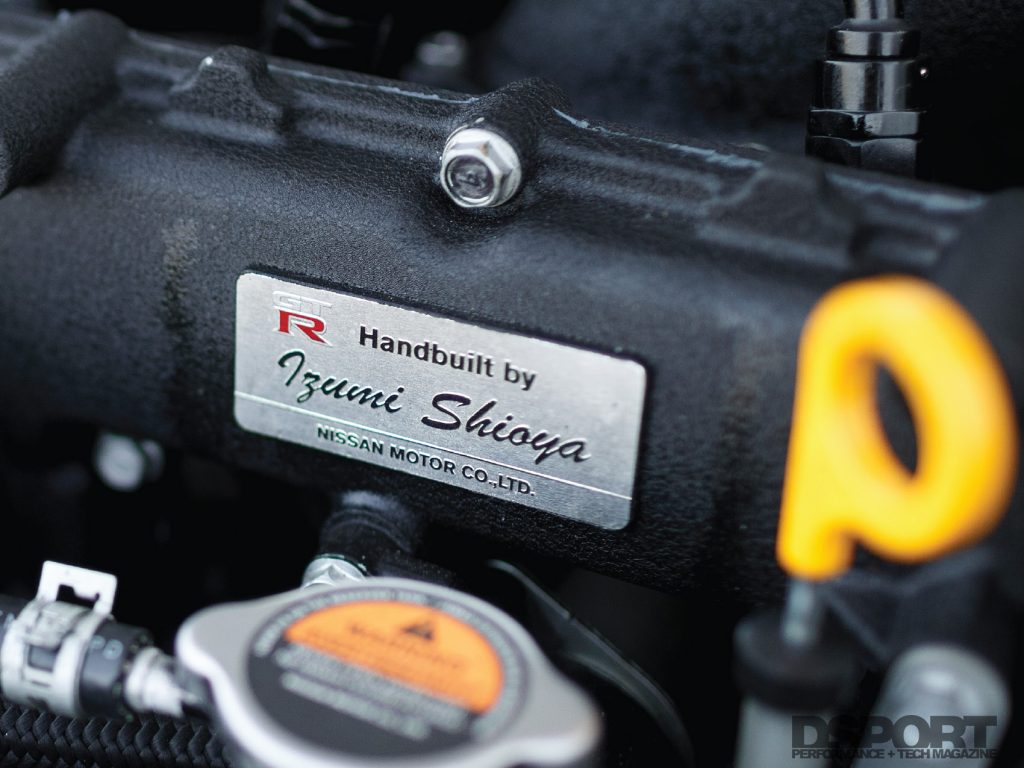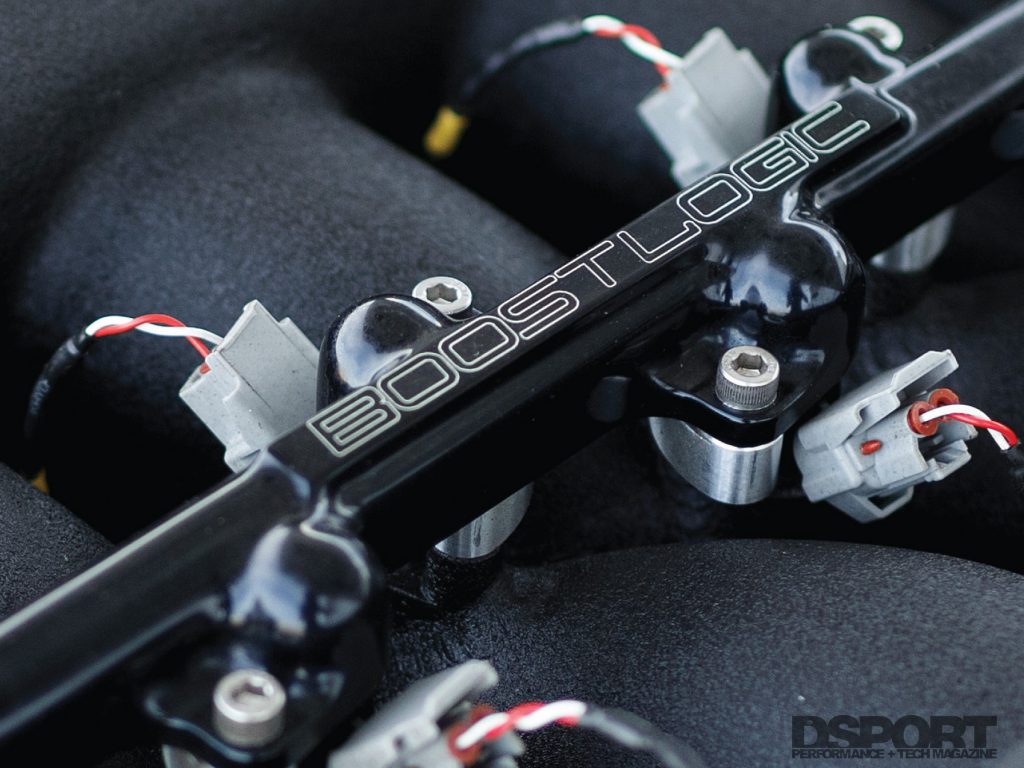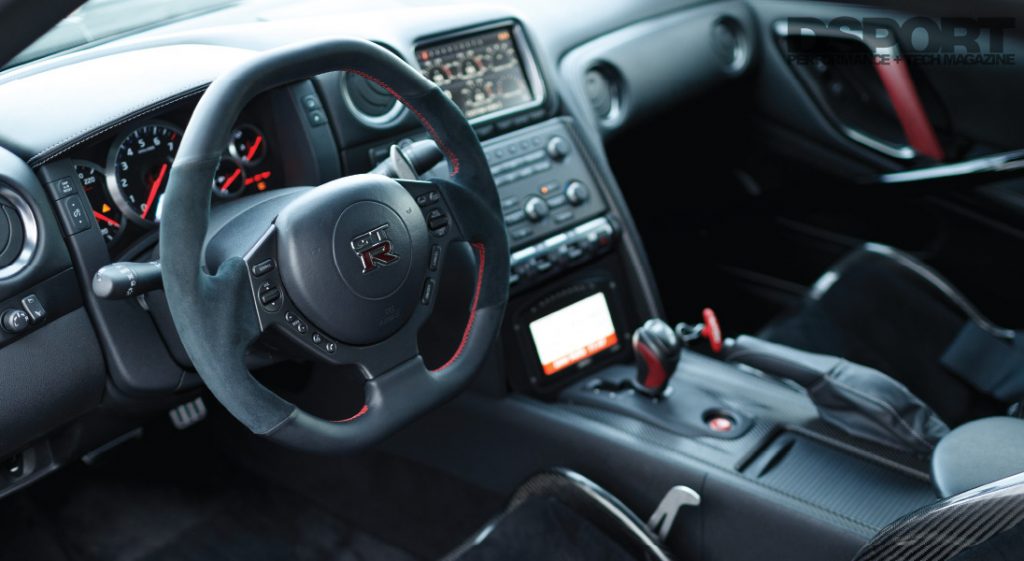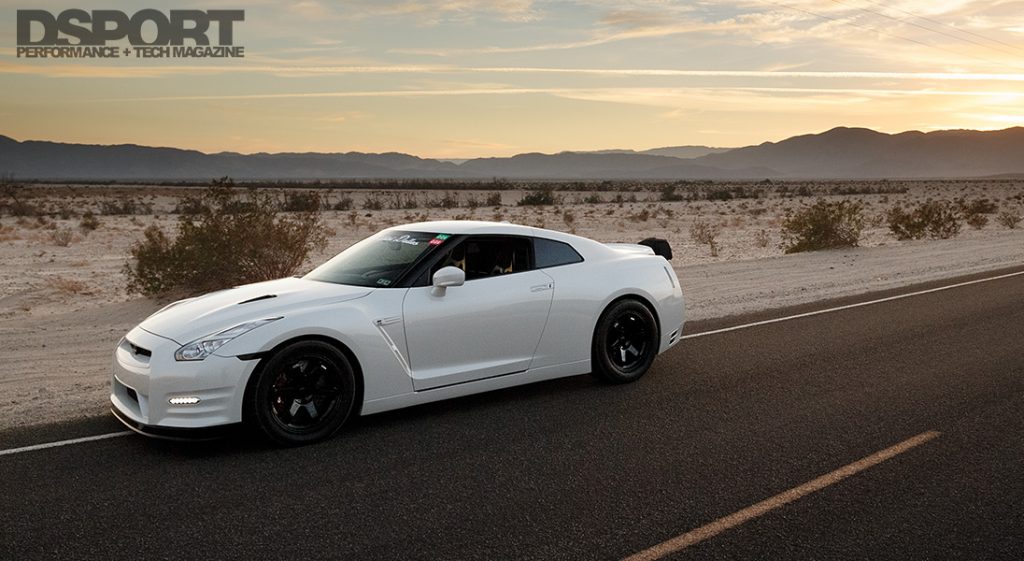Roll racing isn’t real racing. It’s a glorified street race that lacks the sophistication of a race with proper start/finish equipment. In 2003, the Texas Mile event showed us an alternative to traditional 1/8th mile and 1/4-mile acceleration contests. The standing mile was created to give vehicles a competitive venue where there was enough pavement to safely measure top speeds. But for organizers, finding an accessible strip of pavement over a mile long proved to be a challenge.
Text by Richard Fong // Photos by Larry Chen
From Rolling to Standing
Traction had always been a challenge for streetcars, which led to the 60-130 mph acceleration contest. Using a VBOX PerformanceBox or similar accelerometer-based testing equipment, vehicles would build up to 60mph and then accelerate to 130 mph as quickly as possible. This reduced the importance of traction while permitting the measurement of acceleration. Then in 2011, WannaGOFAST held its first half-mile event in Florida, while Shift S3ctor presented its first half-mile event in California at Trona Airport in 2012. These shootout-style events pitted competitors in a rolling start drag race, which again reduced the emphasis on traction and more on power and top speed. Each pairing would slowly roll towards the start cones, line up and accelerate through the cones. The first to reach the half-mile mark would win the race and advance in the competition. Of course, this was great for bragging rights, but the variables left far too many potential points of debate to be quantified accurately enough to claim records. The use of a flagger to initiate the roll race (once he saw the cars were roughly even) was then brought into play, but this was still not as accurate as a standing start. When competitors sought to establish records and benchmarks, these race promoters began using Race America’s wireless trap equipment in order to measure accurate speeds at the half-mile marker. Soon, the rolling start race took a back seat to the standing half-mile.
1/2 is the new 1/4?
Is the half-mile the new quarter mile? While the quarter mile has served as the benchmark of acceleration for decades, the half-mile places less emphasis on the launch and more on top speed. Lucas English, the president of English Racing, has deep roots in drag racing, winning numerous accolades behind the wheel of a variety of platforms. His experience building and driving high horsepower machines in both arenas has given him insight behind the rising interest in half-mile racing. He explained, “When it comes to quarter-mile racing, the key is the 60-foot and 1/8-mile times. Competitive vehicles purposed for this sort of racing are far from being streetcars, and true streetcars just look bad at the drag strip in comparison. On the other hand, a 1,500 horsepower street machine can trap over 210 mph in the half mile on properly speed rated UHP street tires. Of course the launch from a stand still is still important, but it’s more about using the available space to reach top speed rather than how quickly you can cover the distance.”
As such, the quest for more horsepower remains constant, while other aspects of the build have shifted from short-ratio transmissions and slicks to aerodynamics and suspension. In the world of high horsepower exotics like the Ford GT40, twin-turbocharged Lamborghinis, Porsche 911 Turbos and R35 GT-Rs, making power has become an attainable goal. But these high-powered street machines suffer at the launch and lose some streetability when built to endure aggressive launching. Thus, a shift to half-mile competition seemed to offer a venue that allows these cars to aim for trap speeds rather than pure acceleration.
Work Hard, Play Harder
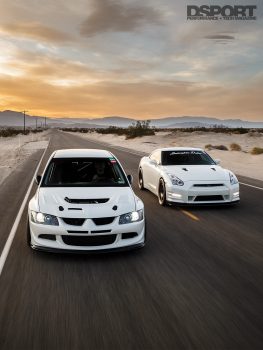 For Austin Oakes, driving is thriving, especially at top speed. He had an EVO VIII at the time and had plans to build it up to be a swift streetcar with show car quality refinement. The allure of the late night, illicit, unsanctioned street activity at the TX2K events in Houston really caught Oakes attention. He wanted to build the EVO to take on cars that easily cost more than four times as much, and leave them shamed by his four-cylinder sedan. However, while street cred is cool among those that enjoy “three honks and the move” type racing, holding a world record is much more respectable, and it’s legal too. Oakes became interested in trap speed records shortly after the first few half-mile events took place. He soon shifted his build focus from highway racing to the standing half mile.
For Austin Oakes, driving is thriving, especially at top speed. He had an EVO VIII at the time and had plans to build it up to be a swift streetcar with show car quality refinement. The allure of the late night, illicit, unsanctioned street activity at the TX2K events in Houston really caught Oakes attention. He wanted to build the EVO to take on cars that easily cost more than four times as much, and leave them shamed by his four-cylinder sedan. However, while street cred is cool among those that enjoy “three honks and the move” type racing, holding a world record is much more respectable, and it’s legal too. Oakes became interested in trap speed records shortly after the first few half-mile events took place. He soon shifted his build focus from highway racing to the standing half mile.
Oakes also noticed the leaps in performance that tuners have been able to achieve with the Nissan GT-R. The incredible achievements on the drag strip and at top speed venues made it an ideal platform to build on, and soon after, Oakes added a 2014 R35 GT-R to his stable. “I purchased this 2014 Black Edition GT-R the day it arrived in May 2013. I knew from the beginning that I wanted to build this vehicle to be the fastest street GT-R in the world. I also wanted the EVO to be able to at least keep up with if not beat GT-Rs and Lamborghinis. At this point, I decided to build the EVO and the GT-R to match one another, from the paint down to the minute details under the hood and in the fender wells,” he stated. With the support of Lease Locators Racing along with sponsorship and alliances with English Racing, Extreme Turbo Systems, Lamborghini Dallas, OB Prestige Auto and McSwain Motorsports, the build up began.
Built and Blown
The EVO VIII’s path started a little rocky, as several shops failed to deliver the goods as promised. Between the shop visits, McSwain Motorsports sprayed the shell to match the GT-R’s pearl white hue. After finishing the exterior and a few blown engines later, the EVO arrived at English Racing. In the hands of English and his staff, the EVO’s 4G63 engine was reconstructed once again. The block was overbored 0.5mm before the cylinders were filled with Wiseco custom 10.5:1 compression pistons. The pistons join a 94mm K1 Technologies stroker crankshaft by way of R&R billet aluminum connecting rods. This new rotating assembly resulted in a displacement increase of 161cc, eight percent more than stock. Up top, the head received English Racing’s custom cylinder head service, which included port work, a valve job to go with the GSC Power Division valves, and Kiggly Racing’s valve springs and titanium retainers. A pair of GSC S3 camshafts provides lift to the new valvetrain.
To fill the cylinders, an Extreme Turbo Systems (ETS) manifold channels spent exhaust gasses into the turbine of a Precision Turbo & Engine PT7285. The T4 sized compressor generates 54-psi boost pressure that flows through an ETS front-mount intercooler. Once chilled, the air charge is distributed to the intake ports, where a quartet of Injector Dynamics ID2000 injectors atomizes E98 into the airstream for combustion. English refined the fuel and ignition tables of an AEM EMS Series 2 ECU to optimize the 4G63’s output. With the chassis strapped to English Racing’s Dynojet dynamometer, the EVO measured a peak output of 1,053 horsepower and 722 lb-ft torque to the wheels.
Tracking at Speed
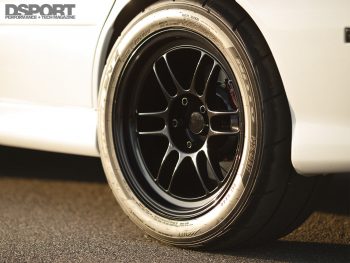 With more than four times the factory horsepower at his disposal, getting the power to the ground efficiently proved to be the next challenge. An Exedy triple plate clutch bolted to the crankshaft transfers torque to the input shaft of the transmission, which had been upgraded with a Pfitzner Performance Gear dog engagement gear set. The all-wheel driveline turns upgraded Driveshaft Shop axles that make the connection to Enkei RPF1 wheels mounted with NT05R rubber. To keep the Nitto tires planted and tracking, AMR Engineering coilovers with Hyperco springs replaced the stock dampers and springs. The exterior remained largely unchanged, save for the English Racing-spec front splitter and custom rear diffuser, which lend to down force without creating excessive drag. These functional additions subtly completed the EVO’s exterior composition.
With more than four times the factory horsepower at his disposal, getting the power to the ground efficiently proved to be the next challenge. An Exedy triple plate clutch bolted to the crankshaft transfers torque to the input shaft of the transmission, which had been upgraded with a Pfitzner Performance Gear dog engagement gear set. The all-wheel driveline turns upgraded Driveshaft Shop axles that make the connection to Enkei RPF1 wheels mounted with NT05R rubber. To keep the Nitto tires planted and tracking, AMR Engineering coilovers with Hyperco springs replaced the stock dampers and springs. The exterior remained largely unchanged, save for the English Racing-spec front splitter and custom rear diffuser, which lend to down force without creating excessive drag. These functional additions subtly completed the EVO’s exterior composition.
For top speed contests, less is often more when it comes to aero. Factory wind tunnel testing generally produces an optimal coefficient of drag.
Proven Formula
As the GT-R was a practically brand new car when it arrived at English Racing, the team got straight to work on upgrading the GT-R’s powerplant first. The ingredients for upgrading the VR38DETT engine came from English’s recipe book for record setting performance. Since they decided to leave the plasma-lined cylinder bores at 95.5mm, increasing the engine’s displacement would require a stroker crankshaft. An ETS stroker kit, composed of 9.0:1 compression pistons, forged steel connecting rods and a 94mm stroker crankshaft combined to increase the displacement from 3,800cc to 4,041cc, an increase of six percent over stock.
To improve the volumetric efficiency of the engine, ETS applied its CNC port program to the heads before outfitting them with a complete Ferrea valvetrain upgrade. Kelford 231-C camshafts with a 276-degree duration were selected to lift the valves. English Racing then O-ringed the cylinder heads to further ensure a proper seal between the block and the heads, while ARP 625 head studs provided the clamping force to hold the longblock together.
Pressurized for Power
Taking advantage of the now 4-liter displacement of the VR38, larger turbochargers could be employed without as much concern about lag. The ETS turbo kit centers on a pair of Forced Performance Super 99 turbochargers for boost production. ETS manifolds direct high enthalpy exhaust gasses to the turbine inlets to generate the exquisite 52-psi boost pressure from the compressors. To improve the turbochargers’ efficiency, spent gasses leaving the turbine housings flow through English Racing’s custom Y-pipe. Once into boost, a pair of 66mm wastegates dump exhaust to the asphalt to mitigate backpressure. The compressed air produced by the turbochargers feeds into an ETS front mount intercooler to exchange heat with the atmosphere. Once chilled, the charge flows through GReddy 70mm throttle bodies before being distributed to the ports by way of a Boost Logic intake manifold.
This intake manifold accommodates a total of twelve injectors, ensuring adequate fuel supply for E85 and high output builds.
Extra Juice
In order to make upward of 1,200 horsepower, a more robust fuel delivery becomes essential, especially when E85 or E98 are the fuels of choice. Thus English incorporates a dual injector system on this build, with six Injector Dynamics ID1300 primary injectors backed by a six-pack of ID2000 injectors. English incorporated an Aeromotive mechanical fuel pump with an English Racing aluminum bracket to keep the rail pressure high. He explained, “In our experience, running multiple pumps doesn’t really cut it in high output builds. We incorporate a mechanical pump because it can reach and maintain fuel pressures up to 200 psi if we want, without the fear of fuel starvation due to an undetected pump failure.” The stock fuel pumps remain in the custom sumped factory tank in order to ensure fuel pressure when starting the engine. With a MoTeC M150 engine management in command of the injectors and ignition, English focused on refining the tables. Once optimized, the GT-R spun the Dynojet’s rollers to a mammoth peak of 1,597 horsepower with 1,166 lb-ft torque.
Cogs and Clutches
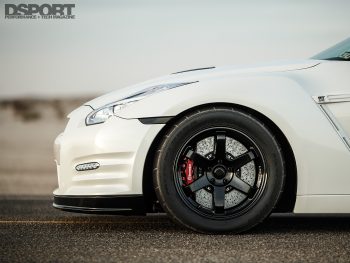 Producing over three times the factory output to the wheels will tax any driveline, and while the VR38 takes well to modifications and making power, the GR6 transaxle becomes the next weak link in the power transfer chain. Thus, it was sent to John Shepherd at Sheptrans to be fortified with his top of the line Stage 5 rebuild composed of a host of Dodson Motorsports’ components, including its Extreme Gearset and Pro Max twelve-plate clutch upgrade. Now capable of handling output up to 1,500 lb-ft of torque, the gears get the Volk TE37SL wheels turning as the Nitto NT555Rs up front and Mickey Thompson ET Street IIs at the back dig into the asphalt.
Producing over three times the factory output to the wheels will tax any driveline, and while the VR38 takes well to modifications and making power, the GR6 transaxle becomes the next weak link in the power transfer chain. Thus, it was sent to John Shepherd at Sheptrans to be fortified with his top of the line Stage 5 rebuild composed of a host of Dodson Motorsports’ components, including its Extreme Gearset and Pro Max twelve-plate clutch upgrade. Now capable of handling output up to 1,500 lb-ft of torque, the gears get the Volk TE37SL wheels turning as the Nitto NT555Rs up front and Mickey Thompson ET Street IIs at the back dig into the asphalt.
Attacking the Half
The eleven-month build effort proved fruitful, as Oakes piloted these cars (which have come to be known as the “LLRTWINS”) throughout this year at four events across the country. The EVO and GT-R dominated their classes in both roll racing and the standing half-mile, setting world record trap speeds in the process. Oakes beamed, “The EVO won the sedan class at all three Shift S3ctor events along with a WannaGOFAST event. Running back-to-back 200+mph passes and setting the record for a sedan with a 202mph trap speed exceeded my goal. Getting the GT-R dialed in to not only survive and win at four race weekends but also 500 miles of city driving and shooting with the Discovery Channel also surpassed my expectations. Claiming the world record with back-to-back passes at 223mph just punctuated the season for us.” But the LLRTWINS are just getting started. The new goals for 2015 include getting the EVO to the line quicker at a top speed of 210 mph, while raising the GT-R’s target to 230mph. So is the half-mile the new quarter mile? Although currently limited by venue options, record setting builds like the LLRTWINS could attract the mainstream attention needed to raise the sport to the next level.




